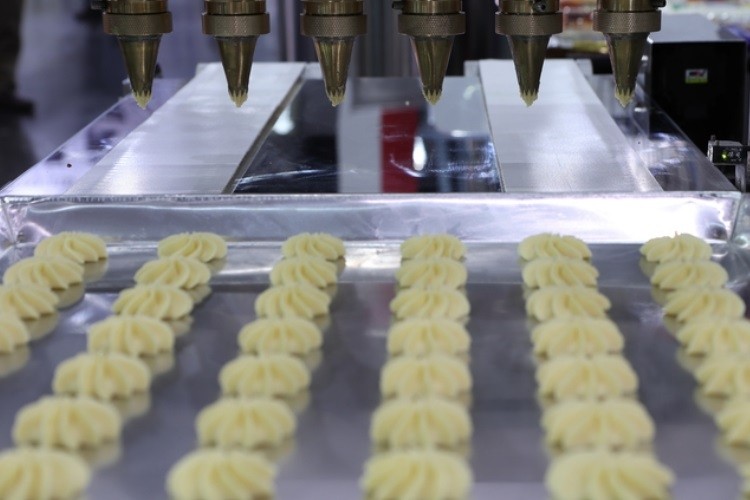‘There is no excuse for non-compliant mechanical seals in food production plants’

According to Paul Green, UK sales manager of AESSEAL, eliminating the risk of contamination and compliance with industry regulations is high on the food industry’s agenda.
However, he said, “There is a shocking lack of awareness of the full implications of several pieces of legislation.”
He is specifically referring to the FCM regulation, which covers materials and articles intended to come into contact with food, and Regulation (EC) 2023/2006 on good manufacturing practices for materials and articles intended to come into contact with food.
Ticking time bomb
“Mechanical seals manufactured from non-saf
e materials are routinely specified, despite the fact they come into contact with food, risking contamination and creating a health and safety ticking time bomb,” said Green.
In the food manufacturing industry, mechanical seal solutions are needed to seal rotating equipment to prevent leakage, as well as to seal thick sticky slurries and solutions capable of withstanding clean-in-place (CIP) procedures. They play a vital part in ensuring processing equipment runs reliably and food ingredients remain free of contamination.
Green said the regulations relating to mechanical seals in these processes could not be simpler.
“Every component must be 100% traceable and a statement of compliancy must be clearly marked on the packaging it comes in.
“So how are potentially unsafe seals creeping into production lines that otherwise have highly stringent safety mechanisms in place?
“The answer lies in the complexity of source materials and supply chains, often compounded by lack of awareness, poor communication and simple force of habit,” he said.
The many faces of carbon
Many mechanical seal faces are made from carbon. There are around 15 grades of carbon commonly used, of which only a handful are compliant with Food and Drug Administration (FDA) standards.
Of the remainder, some are suited to chemical applications and do not require FDA compliance.
Finally, there are antimony carbons, which are used in the oil and gas industry and are poisonous.
“It seems blindingly obvious that these should never be used anywhere near the food supply chain but incredibly, we have seen this type of carbon on sites where the implications of it being misapplied could be disastrous,” said Green.
“The problem with these unsafe materials is that they all look exactly the same as a seal that is 100% traceable and compliant.
“You simply cannot differentiate between the two - unless you have its traceability clearly stated on the box it comes in,” he said.
Imperative issue
Green said the potential risk implications of installing untraceable mechanical seals cannot be overstated.
He noted that, the more complex the food production process, the greater the number of seals there may be.
“Some plants may have as many as 15 to 20 mechanical seals and 60 to 100 static sealing joints across the whole production line.
“A company that carries out stringent checks at every stage of production might be blissfully unaware that there are in fact a number of points of heightened contamination risk along that line - one for every seal,” he said, noting those responsible for compliance with FDA and EU regulations do not always pass that information on to operatives at the lower ‘repair and replace’ end of the production line.
“The need for expediency means that when repairs are required, the operative’s focus is on getting a production line back up and running rather than considering the compliance of the spare part being picked off the shelf,” he added.
Losing traceability
Green also highlighted the risk of importing component seals from Asia.
While an engineer or purchasing department may take it for granted the Original Equipment Manufacturer (OEM) bought the product from the lowest cost source, what they might not be aware of is that these products have often been through so many links in the supply chain that by the time it arrives at the end user, all traceability has been lost.
“And if you have no traceability, you have zero knowledge of the material the seal is produced from,” said Green.
“In particular, those brands who work with an external supplier to maintain their equipment find themselves dangerously far removed from compliance requirements, assuming - sometimes incorrectly – that the supplier has properly interpreted and implemented safety legislation,” he added.
He noted Regulation EC1935/2004 is clear on this stance.
“If that traceability is not visibly evidenced on the packaging, those claims carry no validity and the mechanical seal should not be installed on a food and beverage production line,” he said.
Simple solution
On the plus side, Green said there is a simple solution to what effectively amounts to building risk in to production processes at the same time as breaking the law. Look at the label. And if the seal comes in packaging that does not clearly state its source, do not use it.
“The food industry can rightly pride itself on its high levels of quality assurance and self-regulation, but the failure to understand or act on the laws and regulations around traceability and labelling is a serious chink in its armor,” said Green.
He said AESSEAL estimates very few mechanical seals currently used in the industry actually comply with standards.
“We are working to bolster awareness of the compliance requirements that impact processing equipment and machinery to try and drive change within the industry before it faces another health and safety crisis,” concluded Green.













